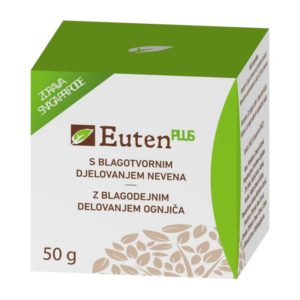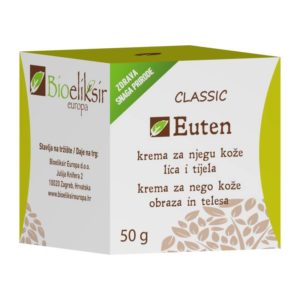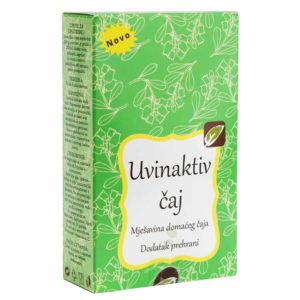Eczema and psoriasis are a few of the most difficult skin conditions struck by skincare professionals. Many times, there’ll just be a modest red rash on skin and you might be left scratching your head trying to find out how it was. Up to 20 percent of the planet’s children suffer with eczema, up and 2 to 3 percent of adults suffer with psoriasis or eczema. Given the world population only attained the 7 billion mark, that is a great deal of individuals. Eczema, together with allergies and asthma, are on the increase; in actuality, eczema is a lot more common now than it was 30 decades ago, particularly in kids. This quick spike in evident incidence can cause for concern, and might be because of a lot of factors, such as insufficient diet, pollution and other environmental stressors. The reality is, it is not known precisely what causes psoriasis or eczema. The good news is, more and more has been discovered about those inflammatory skin diseases and approaches are being designed to efficiently manage their own symptoms.
It’s important to remember that neither illness is infectious, nor are they ailments; and they are not transmitted by outside exposure or contact. The sources of eczema and psoriasis are genetic; nonetheless, the causes which cause their painful and observable symptoms could include environmental and stress elements.
Eczema
A rash by another name remains a rash. The conditions “eczema” or “dermatits” are extremely broad and may signify a complete family of skin ailments, which range from dandruff, to contact dermatitis to atopic dermatitis. This may result in many a confused customer and skincare professional. It causes dry, itchy, irritated skin which needs daily care. Genetic flaws in eczema lead to abnormal skin cell differentiation. During distinction, keratinocytes proceed from the basal cell layer of the skin during the granular layer into a bunch of cells that are dead cells from the stratum corneum. This practice of epidermal differentiation, or keratinization, entails an assortment of proteins responsible for of distinct functions at every stage.
One of those proteins, filaggrin, plays a significant role in epidermal homeostasis; it’s two main functions. To begin with, it piles the keratin filaments into compact packages, allowing for effortless desquamation. Imagine how much simpler it would be to move flattened boxes compared to propped-open boxes. It’s then converted to your skin’s natural moisturizing factor (NMF) and other compounds. This appears to be the biological foundation of skin that is dry.
There is another kind of eczema which shows up as the exact same itchy rash, but doesn’t involve allergic reactions. Though most–about 90 percent–create atopic dermatitis prior to age, non-atopic psoriasis develops in adulthood or adolescence, normally by age 5. All these adults do not have heightened allergic reactions or particular allergies, but nevertheless find dry, itchy skin. Remember that even when a customer is categorized as atopic or non-atopic, then the final result is the exact same itchy patch of skin, and this has to be cared for in precisely the exact same manner.
Psoriasis
Psoriasis was confused with eczema, lupus, boils, vitiligo and leprosy. Due to the perplexing link with leprosy in early times, psoriasis sufferers were made to wear exceptional suits and take a rattle or bell, such as lepers, declaring their existence. Just in the 19th century proved to be a differentiation made between psoriasis and leprosy, relieving some of the psychosocial effect of this highly visible and debilitating skin disorder. Like eczema, it poses as itchy, red skin also involves altered immunity. But, its complexities reach much beyond the top layer of the skin. The mysteries behind the complex and debilitating skin disorder are just beginning to be unraveled. Psoriasis is a chronic, inflammatory multisystem disease affecting 1-3 percent of the world’s inhabitants. Whereas the rashes on eczematous skin may have irregular borders and feel, psoriatic lesions have a tendency to be uniform and different. Red or pink regions of thickened, dry and raised skin usually within the elbows, knees and scalp. This demonstration will be more prevalent in regions of trauma, abrasions or repeated waxing and usage, although any place might be impacted.
Plaque psoriasis affects about 80 percent of people who suffer with psoriasis, which makes it the most frequent type. You are very likely to experience this kind at a skin care centre, so it is important that you understand how to recognize and comprehend it to help you handle your customer’s requirements. It might initially appear as small red bumps that could then expand and form scales. The other kinds are less common and current inflamed skin with reddish bumps; pustules; cracked, dry skin; as well as burned-looking skin. Clients will almost certainly be under a doctor’s care, that will diagnose the type of psoriasis existing.
One cause of this disease has not yet been discovered, but it’s known that growing the disease requires the immune system, genetics and environmental aspects. In psoriasis, aberrant immune action causes inflammatory signs to go haywire from the skin, resulting in a buildup of cells in the top layer of the skin. While ordinary skin requires 28-30 days to grow, psoriatic skin requires just 3-4 times to grow and, rather than shedding off, the cells pile up on the top layer of the skin, forming lesions and plaques. The underlying reason could be a result of the darkening of T-cells, which wind on the skin and activate inflammation and keratinocyte overproduction. Even though it isn’t known why this occurs, it’s understood that the final result is a cycle of skin cells growing too quickly, dead cell-debris accumulation and consequent inflammation.
Managing the Symptoms
Even though there isn’t any cure for eczema or psoriasis, there are strategies to deal with symptoms, and obtaining this understanding will result in more educated and satisfied customers. Although psoriasis and eczema are clinically different from one another, they do share several common characteristics which could possibly be addressed at the therapy area. Both psoriasis and eczema customers have diminished barrier function and improved inflammation, which means that your aim is going to be to protect and fix. Never forget to check with your customer’s doctor for contraindications to drugs and remedies, as some ingredients can counteract each other. By way of instance, salicylic acid might appear a possible selection for exfoliating skin care skin, but may, in reality, inactivate a standard topical cure for psoriasis.
After a complete consultation with the customer and her doctor is finished, proceed with a treatment utilizing minimum merchandise and procedures. A fantastic method to compensate for nominal skincare time would be to include on stress-relieving methods, since there’s a psychological element to psoriasis and eczema. Complementary therapies, like acupuncture, aromatherapy, reflexology, massage and inhalation techniques may be combined with skin remedies to reduce stress hormones and control inflammation.
Finishing a remedy using a physical sunscreen, like Zinc oxide or Titanium dioxide will guarantee that damaging UV rays don’t cause additional harm.
Training the customer on healthcare is also an essential component of skin wellness care. Not only will they have to comply with their prescribed skincare regimen; they’ll also have to have realistic expectations concerning time, also expect to find that the extended advantages of the treatments long when they are done. As these are chronic inflammatory skin conditions, these customers can be an important business opportunity, using an elevated likelihood of return reservations. Both psoriasis and eczema pose highly observable symptoms, and due to this, customers are motivated to assist skin improve. Skin care direction is a top-of-mind priority for this particular customer’s lifestyle, differentiating your solutions from occasional remedies. Do not be scared to handle these skin diseases from the therapy area; the reward might be greatly beneficial for you and your clientele.
This content is not intended to advise you about your health. Always seek advice from your doctor or other qualified healthcare professionals.
References:
L Maintz and N Novak, Getting more and more complex: the pathophysiology of atopic eczema, Eur J Dermatol, 17 4 267–283 (2007)
HW Walling and BL Swick, Update on the management of chronic eczema: new approaches and emerging treatment options, Clinical, Cosmetic and Investigational Dermatology 3 99–117 (2010)
AM Bowcock and W Cookson, The genetics of psoriasis, psoriatic arthritis and atopic dermatitis, Human Molecular Genetics 13 R43–R55 (2004)
FJ Smith, et al, Loss-of-function mutations in the gene encoding filaggrin cause ichthyosis vulgaris, Nat Genet 38 337–342 (2006)
CN Palmer, et al, Common loss-of-function variants of the epidermal barrier protein filaggrin are a major predisposing factor for atopic dermatitis, Nat Genet 38 441–446 (2006)
SJ Brown, et al, Loss-of-function variants in the filaggrin gene are a significant risk factor for peanut allergy, J Allergy Clin Immunol 127 661–667 (2011)
www.niams.nih.gov/health_info/atopic_dermatitis/default.asp#b (Accessed May 3, 2012)
S Jacob, M Miller and EM Herro, Atopic Dermatitis—A historical review, Skin & Aging 19 (Suppl) 1–11 (2011)
A Cowden and A Van Voorhees, Treatment of Psoriasis (1–9), Switzerland, Birkhäuser Verlag (2008)




